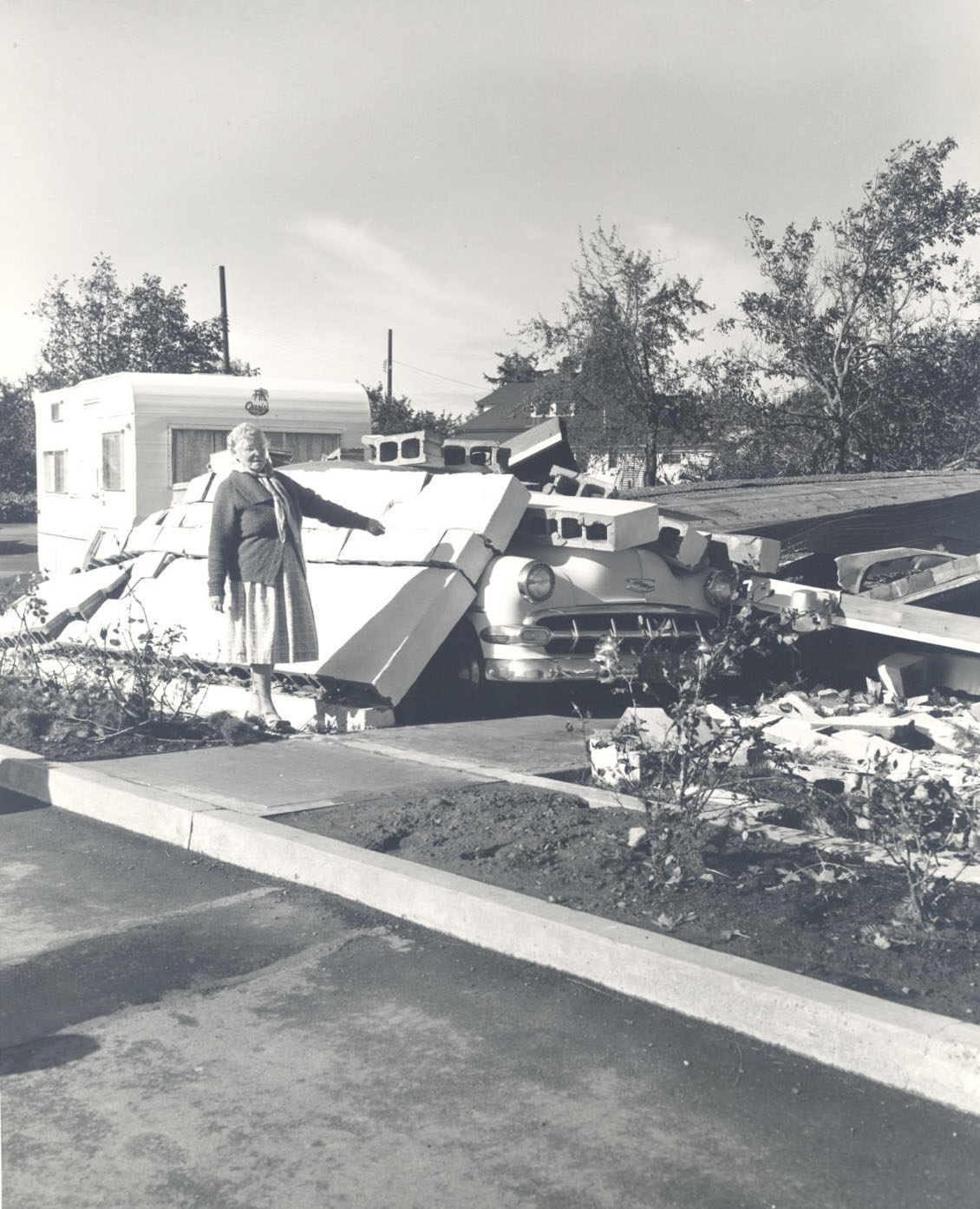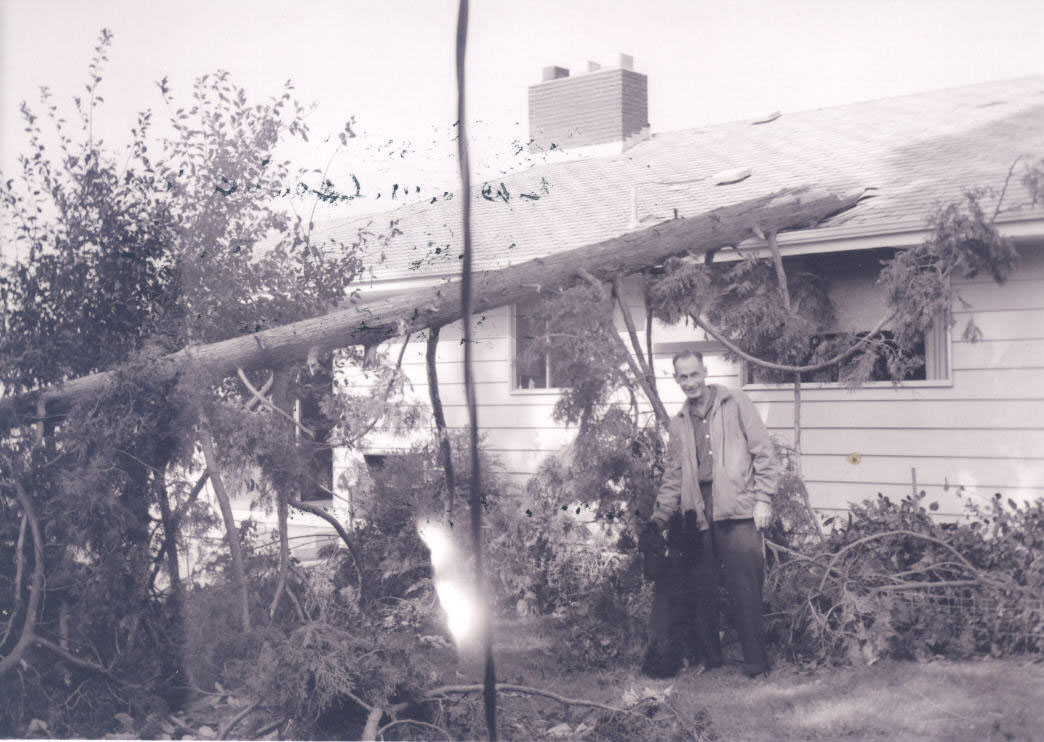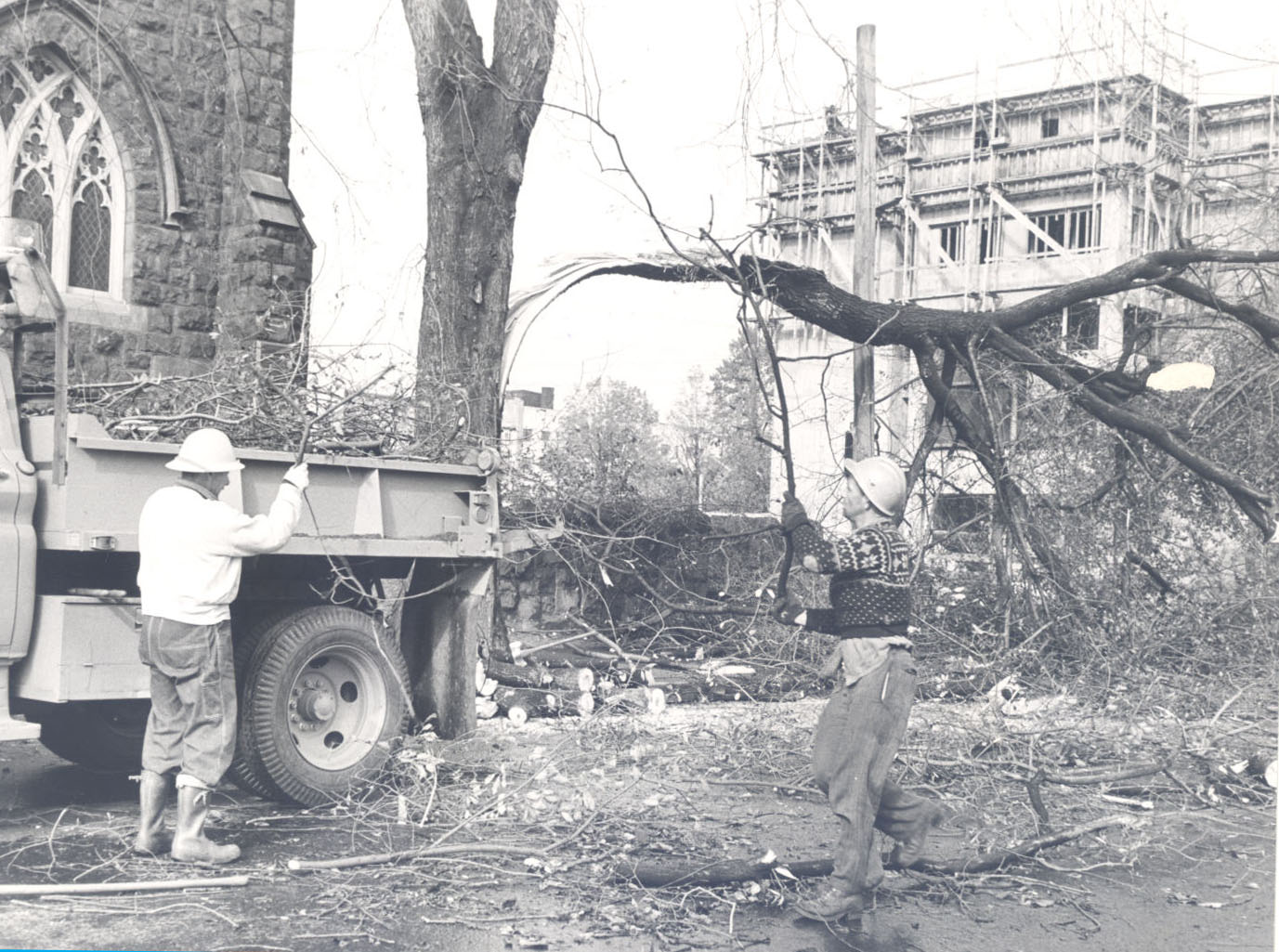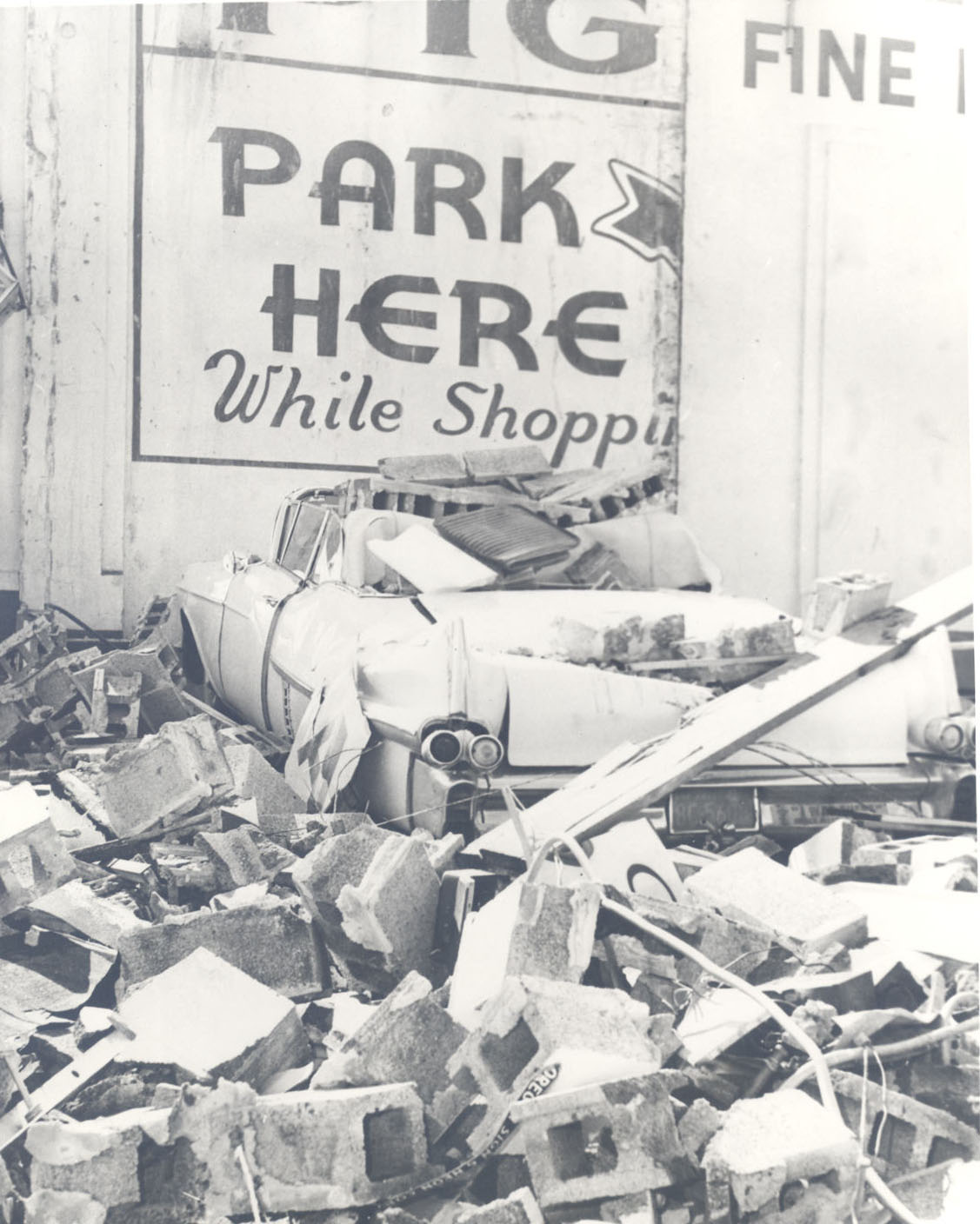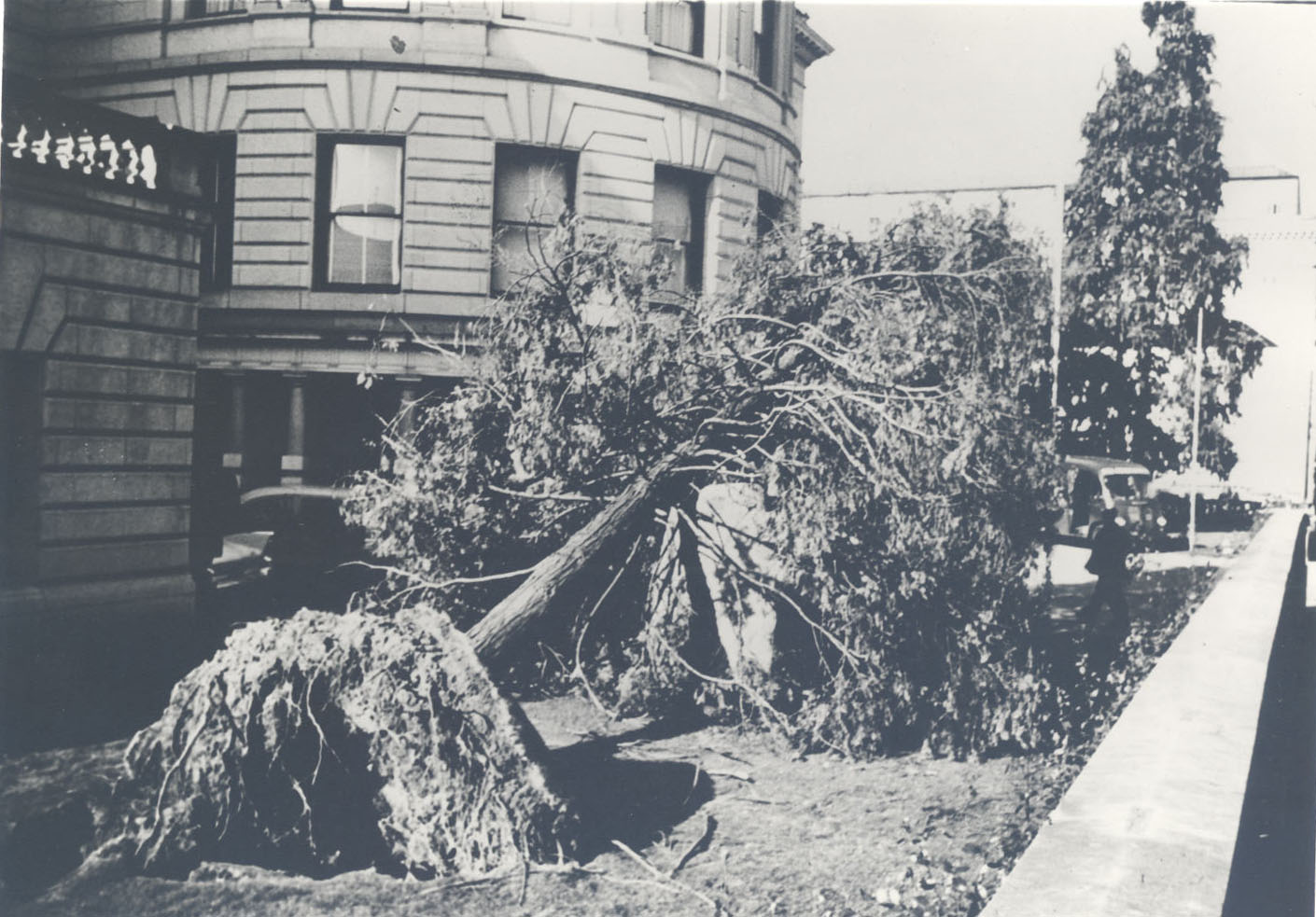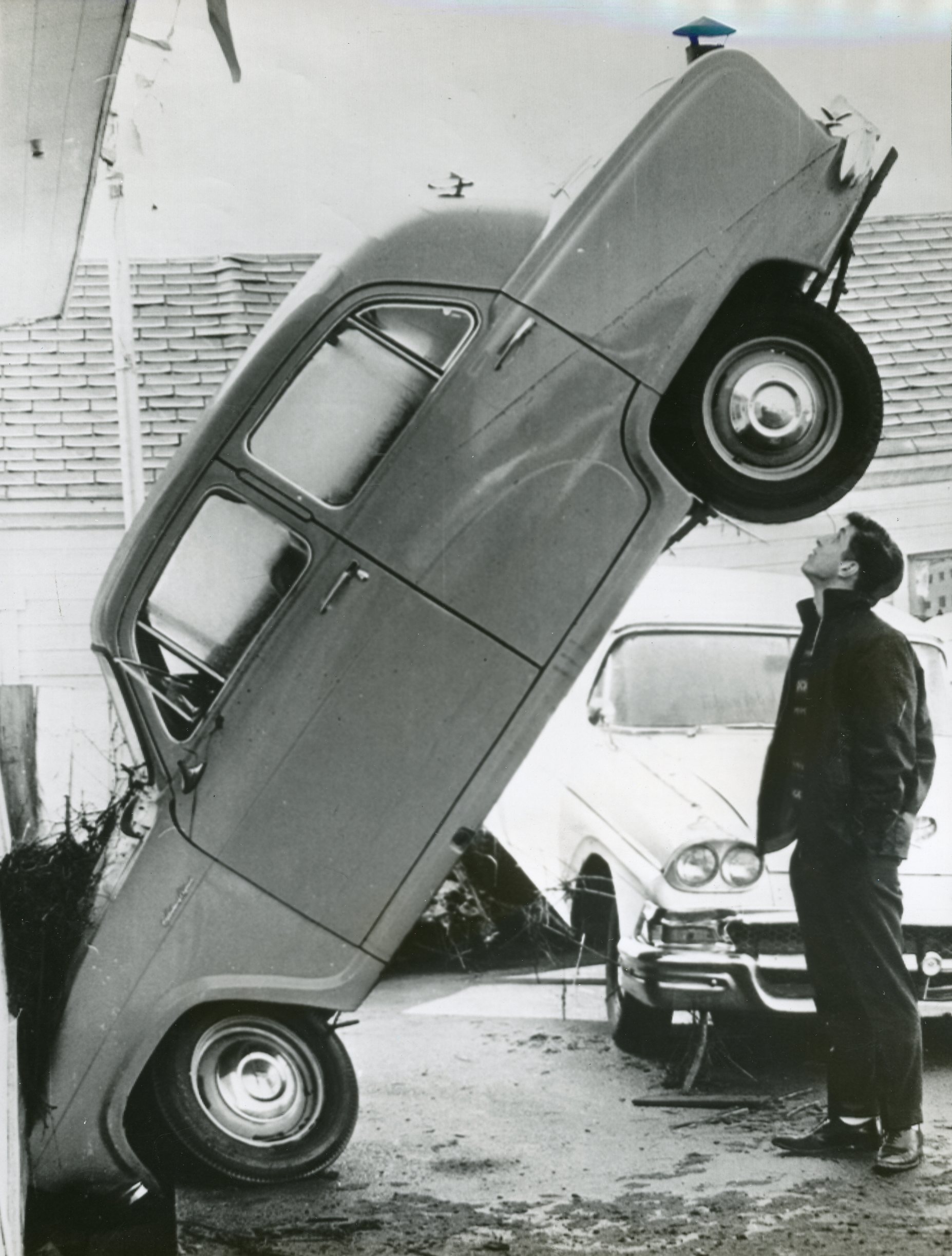On the morning of Friday, October 12, 1962—Columbus Day—a massive storm hit the coast of northern California. The storm had originated several days earlier in the Pacific Ocean, about five hundred miles north of Wake Island. Re-energized by a combination of unusual meteorological conditions, the storm moved north with the gathering force of a Category 3 hurricane. Originally named Typhoon Freda by meteorologists and called the Big Blow by many, it may have been the most powerful extratropical cyclone ever to hit the western United States.
With barometric pressure plunging and with gusts at Cape Blanco's Coast Guard station measuring at over 145 miles per hour (some estimates put the wind speeds there at over 170 miles per hour), the havoc wreaked by the Columbus Day Storm extended from the northernmost California coast to southern British Columbia. The storm caused between $3 billion and $5 billion (in 2013 value) in property damage and the death of over fifty people.
Beset by heavy rainfall, California suffered mudslides and damage to buildings and highways, and the World Series games between the New York Yankees and the Giants were cancelled in San Francisco. In Seattle, the World's Fair was in its final week of operation, and the swaying and groaning of the Space Needle forced its evacuation. In Portland, however, on the afternoon after the storm, the Oregon State Beavers and the Washington Huskies football teams battled it out on the rain-sodden grass of Multnomah Stadium.
Oregon experienced the full brunt of the typhoon and suffered more damage than any other state. In addition to substantial damage to thousands of buildings— residential, commercial, and civic—and to miles of power lines, the severe winds toppled countless trees in western Oregon's forests. The storm outranks all other natural disasters in the state in terms of destruction and cost, including the 1903 Heppner Flood.
The intense winds left over a million people in Oregon without electrical power, some of them for weeks. On Mt. Hebo, near the Coast, the storm’s winds destroyed an Air Force radar station. Outside the capitol building in Salem, the Circuit Rider, a bronze sculpture by Alexander Phimister Proctor, toppled off its pedestal. In Monmouth, on the campus of the Oregon College of Education (now Western Oregon University), Campbell Hall (1871) lost its landmark Gothic-style tower. Portland's Morrison Street Bridge experienced wind gusts of 116 mph, and a number of the city's major radio-transmission towers tumbled over. Most of the deaths from the storm in Oregon were the result of flying debris and falling trees.
U.S. Forest Service employees working in the coastal forests that Friday were blocked by trees across the roads. With trees crashing down all around, some of the men ran to the comparative safety of recently logged clear-cuts. In the national forests of the Pacific Northwest, between 11 billion and 17 billion board feet of timber blew over, creating jack-strawed areas of fallen trees. The volume of downed timber exceeded the annual cut of the Forest Service's entire Pacific Northwest Region at the time. Because of the storm, construction of salvage logging roads accelerated the following year in order to give loggers access to unroaded areas.
Immediately after the storm, Congress passed special funding for a highly accelerated emergency road-building and salvage-logging program to bring the wind-thrown timber to sawmills and plywood mills before it rotted, a challenge that the Forest Service met within a year. As a result, roadless areas such as the Elk Creek drainage on the Rogue River National Forest's Prospect Ranger District were laced with logging roads. The suddenly expanded road system helped lead to higher harvest levels during the 1960s and 1970s. The term “windfall” was fully realized on privately owned Coast Range forestlands, with millions of board feet of logs suddenly infusing the timber companies’ then-new exporting of “raw logs” to Japan.
The Columbus Day Storm toppled or severely damaged many acres of walnut groves and prune orchards in the vicinity of Dundee. In the late 1960s the resulting ready availability of abandoned fruit orchards at low prices attracted the northwest Willamette Valley’s first “wine pioneers,” who planted pinot noir and other varietals on former orchard land.
-
![]()
Columbus Day Storm, 1962.
Courtesy Oregon Hist. Soc. Research Lib., PGE coll., acc12105
-
![Damage in Junction City.]()
Columbus Day Storm, 1962.
Damage in Junction City. Courtesy Oregon Hist. Soc. Research Lib., 65300
-
![Jim Johnston of Portland stands next to storm damage of his home.]()
Columbus Day Storm, 1962.
Jim Johnston of Portland stands next to storm damage of his home. Courtesy Oregon Hist. Soc. Research Lib., acc27750
-
![Aftermath at the University of Oregon campus]()
Columbus Day Storm, 1962.
Aftermath at the University of Oregon campus Courtesy University of Oregon Libraries
-
![Damaged trees at NW 19th Ave. in Portland.]()
Columbus Day Storm, 1962.
Damaged trees at NW 19th Ave. in Portland. Courtesy Oregon Hist. Soc. Research Lib., ba021616
-
![]()
Columbus Day Storm, 1962.
Courtesy Oregon Hist. Soc. Research Lib., 65299
-
![Port Orford cedar planted at turn of the century outside Portland City Hall was replanted. It survived.]()
Columbus Day Storm, 1962.
Port Orford cedar planted at turn of the century outside Portland City Hall was replanted. It survived. Courtesy Oregon Hist. Soc. Research Lib., 76579
-
![Damage to the Van Buren Street Bridge in Corvallis]()
Columbus Day Storm, 1962.
Damage to the Van Buren Street Bridge in Corvallis Courtesy Oregon State Univ. Libraries
Related Entries
-
![Earthquakes and Tsunamis in the Cascadia Subduction Zone]()
Earthquakes and Tsunamis in the Cascadia Subduction Zone
Sometime in the future, the Pacific Northwest, including Oregon, Washin…
-
![Heppner flood of 1903]()
Heppner flood of 1903
In the rolling wheat fields of north-central Oregon's Morrow County lie…
-
![Oregon Tsunami Hazard Mitigation Program]()
Oregon Tsunami Hazard Mitigation Program
The National Tsunami Warning System provides advance warning of earthqu…
Map This on the Oregon History WayFinder
The Oregon History Wayfinder is an interactive map that identifies significant places, people, and events in Oregon history.
Further Reading
Dodge, John. A Deadly Wind: The 1962 Columbus Day Storm. Corvallis: Oregon State University Press, 2018.
Horton, Kami. "It's been 60 years since the Northwest's record-breaking Columbus Day Storm." Oregon Public Broadcasting, October 12, 2022.
Joslin, Les. “The Columbus Day Storm of 1962: Old Smokeys Remember the Big Blow." Old Smokeys Newsletter. Newsletter of the Pacific Northwest Forest Service Retirees Association. Fall 2012.
Lucia, Ellis. The Big Blow: The Story of the Pacific Northwest’s Columbus Day Storm. Portland, Ore.: Binford and Mort, 1963.
Read, Wolf. "The 'Big Blow' of Columbus Day 1962." Office of the Washington State Climatologist. www.climate.washington.edu/stormking/October1962.html
Taylor, George H. and Raymond R. Hatton. The Oregon Weather Book: A State of Extremes. Corvallis: Oregon State University Press, 1999.

